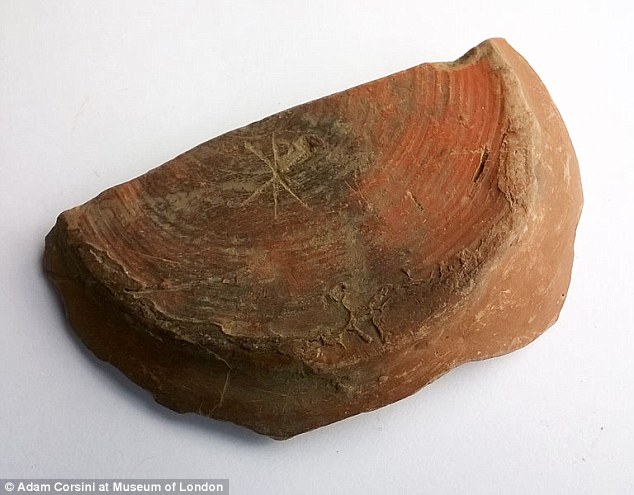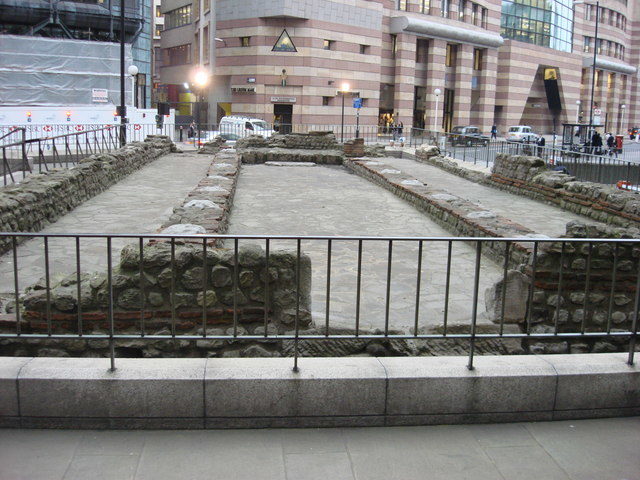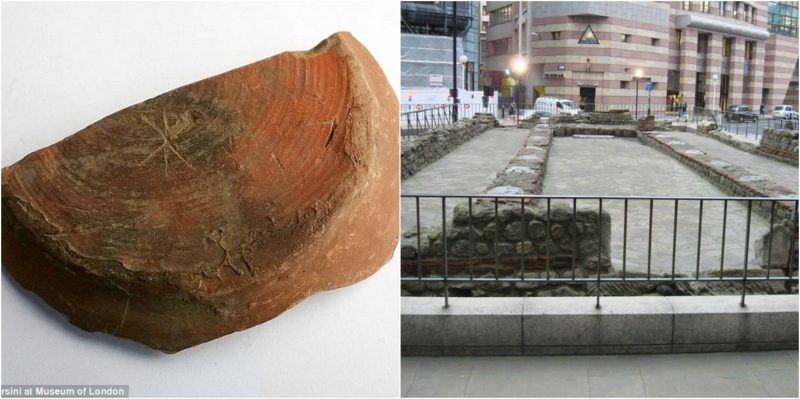The fragments of Roman pottery discovered in the 70s have now revealed some fresh clues towards it origins and character. The pottery is now believed to have a Christian symbol carved on it, which was previously overlooked or missed by the archaeologists. The finding is highly significant since the researchers are particularly interested in the information regarding the religious makeup of the time when it was first made. The pottery is from the 4th BC, and was produced in Hinterland, west London region now known as Brentford.

The discovery is hailed by the archaeologists as a ‘tantalizing find’ and is likely to shed some light on the sprouting of Christianity from Londinium (the Roman London) into the other parts of the Britain. Head of Archaeological collections at the Museum of London Roy Stephenson said that finding a Roman relic that shows the Christianity’s presence in the outskirts of Londinium in the 4th century is intriguing. He said that all the previous findings of anything Christian was mostly within the region of London now called the Central London. Brentford being a day’s journey from the ancient Londinium at the time previously thought to have no Christian presence at all, as there was no evidence to make that case.

Christian missionaries preferred to stay centralized because the city at the time was a mixture of almost all the major religions and other alternate faiths. This provided a perfect flourishing environment for the early Christians to learn other faiths, while at the same time spreading the gospel among the travellers and traders.
The accidental discovery was made by the volunteers working for Archaeological Archive at Museum of London. Adam Corsini who is the manager of Archaeological collection at the museum of London said that they first observed the mark on the pottery but did not think much of it. However upon close inspection the true nature of its significance revealed itself. They quickly found out that what they discovered is a rare find and that such discovery could change the narrative of Londinium and Christianity in the 4th century.

In the ancient Roman city of Londinium religions played a very important role in the makeup of the society. The inhabitants of the city worshipped many gods and goddesses. Every aspect of their lives was governed by the religion of some kind or the other. They celebrated religious holidays and took part in festivals. Roman deities like Jupiter, Mars and Minerva were possibly the most worshiped gods. Isis and Mithras were also incorporated into the local religious experience. Mithraism at the time was specifically the secret society for the soldiers and knights both local and foreign.
Londinium was in many aspects very similar to the modern London, people came to the city from all over the world looking for trade, and some of them made Londiniumtheir home. Christianity arrived at the ports ofLondinium and quickly saw an opportunity in the religiously fertile Londinium. However it took Christians a fairly long period of time to step out of Londinium and spread outwards with their message. The recent discovery at least provides some evidence that Christian missionaries had actually moved out of Londinium, at least westwards. Now it is up to the researchers to further the study towards that ancient route in order to shed more light on the journey of Christianity deep into the other part of Britain.
